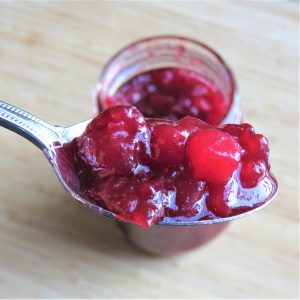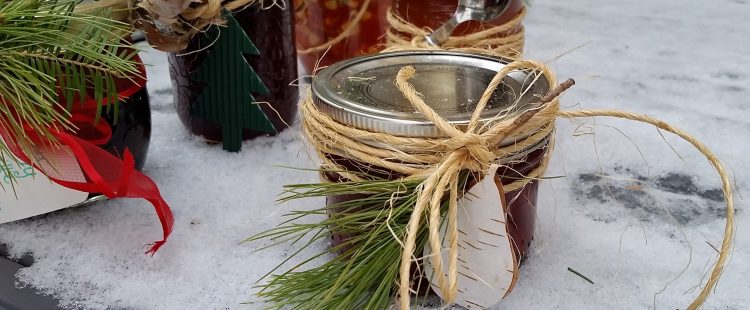Cranberry Pear Chutney
Excerpted from The Complete Book of Pickling by Jennifer MacKenzie (Robert Rose 2009, 2017)
This recipe was featured at Michelle Live in Show on December 15.
Pears add a floral sweetness and pleasant balance to the tang of the cranberries. Try this instead of traditional cranberry sauce with roast turkey or ham, with Brie or sharp cheese, or as a sandwich spread.

Makes about six 8-ounce (250 mL) jars.
4 cups (1 L) cranberries
4 cups (1 L) chopped peeled pears (about 3 large)
1-1⁄2 cups (375 mL) finely chopped onions
2-1⁄4 cups (560 mL) packed brown sugar
2 tsp (10 mL) pickling or canning salt
1 tsp (5 mL) freshly ground black pepper
1⁄2 tsp (2 mL) ground cinnamon
1⁄4 tsp (1 mL) ground nutmeg or ginger
1-1⁄2 cups (375 mL) cider vinegar
1. Prepare jars and lids, if preserving for room temperature storage, bring hot water canner to a boil.
2. In a large pot, combine cranberries, pears, onions, brown sugar, salt, pepper, cinnamon, nutmeg and vinegar. Bring to a boil over medium heat, stirring often. Reduce heat and simmer, stirring often, for about 30 minutes or until thickened to a thin jammy consistency.
3. Ladle hot chutney into hot jars, leaving 1⁄2-inch (1 cm) headspace. Remove air bubbles and adjust headspace as necessary by adding hot chutney. Wipe rim and place hot lid disc on jar. Screw band down until fingertip-tight.
4. For hot water canning, place jars in canner and return to a boil. Process for 10 minutes. Turn off heat and remove canner lid. Let jars stand in water for 5 minutes. Transfer jars to a towel-lined surface and let stand for 24 hours. Check lids and refrigerate any jars that aren’t sealed. Store in a cool, dark place for up to 1 year. Refrigerate after opening.
5. For refrigerator storage, let cool completely, then refrigerate for up to 3 months.
Tips
* Choose fragrant but firm pears and use a variety that keeps its flavor when cooked, such as Bartlett, Bosc or Packham.
* This chutney thickens quite a bit upon cooling, so stop the cooking when it’s thinner than you want the final texture to be.

